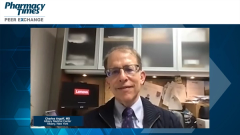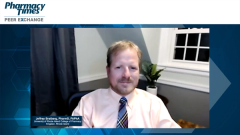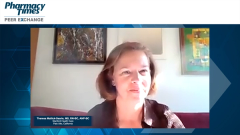
New Labeling Requirements Put Forth by the FDA for Opioids
Theresa Mallick-Searle, MS, RN-BC, ANP-BC, shares her perspective on the new labeling requirements put forth by the FDA for opioids in regard to naloxone.
Episodes in this series

Peter Salgo, MD: I would say it would be a mistake to continue to focus on only illicit opioids and only on people who have been taking opioids for a long time. Opioids are opioids, and they have risks, whether they are utilized by someone for whom it is prescribed or others without a prescription. The real question is, how do we make opioids less risky? How do we make an overdose less likely? There are new labeling requirements for the prescribing information of opioid pain medicines to treat opioid use disorder. These requirements include the recommendation that naloxone be discussed with patients when beginning or renewing any treatments.
What is our view on this? Is naloxone a good idea; discussing naloxone with everybody is reasonable and, in fact, necessary? What do you think, Theresa?
Theresa Mallick-Searle, MS, RN-BC, ANP-BC: I would agree. I like that the FDA has taken a stance, that has gone to a federal level, because I think it holds us all accountable. It is no longer about what you do in New York versus what I do in California; this federal stance brings forth a state of awareness. All health care providers and all prescribers now have to look at this and think about the safety aspect of prescribing opiates. Getting back to what we were discussing a little bit before, aside from the labeling discussion—a community problem I see is the amount of pills that wind up being out there in the community and not used.
A couple of years ago, we started seeing this pull back where, post-surgery, doctors and prescribers would not give 30 or 60 pills; they’d be realistic in terms of what they prescribe. I like the labeling; I think it is an important public health initiative to get the word out there about the importance and decrease the fear of naloxone. It is important for patients to have a prescription or get it from the pharmacist, while doctors and prescribers educate their patients and their peers about its utility.
California went live with AB [assembly bill] 2760 last year, which required that we have a discussion about naloxone whenever we write an opiate prescription with our patients, that we give them the option. I’m happy that it has gone on to a federal level now.
Peter Salgo, MD: I’ve got to tell you, I work in a hospital-based practice, and I was not aware that this legislation existed. I wonder how many practitioners know. I do want to go onto our next segment, but I want to put this into perspective: I do not know a lot of doctors who know about this, and I do not know a lot of patients who know about this. What I am sensing is it is a really good thing, but it is not out there in terms of people knowing about it and implementing it.
Theresa Mallick-Searle, MS, RN-BC, ANP-BC: Right. This situation happens often. The government makes legislation—be it the national government or the state government—and then it takes us, the practitioners, to get the word out. We either have to do public health announcements, start educating our peers at conferences, or present this information online or virtually like we are doing now. You are absolutely right. It is new legislation. I am sure that various states like California have had some form of this legislation for a while…and it is particularly important in the inpatient setting.
I work both in a clinic as well as an acute care setting, and it is completely different in terms of not only how opiates are prescribed, but also the safety when the patient goes home afterward. In the hospital, doctors may just to write the prescription and send the patient out there. It is a matter, right now, of educating our peers.
Transcript edited for clarity.
Newsletter
Stay informed on drug updates, treatment guidelines, and pharmacy practice trends—subscribe to Pharmacy Times for weekly clinical insights.














































































































































































































